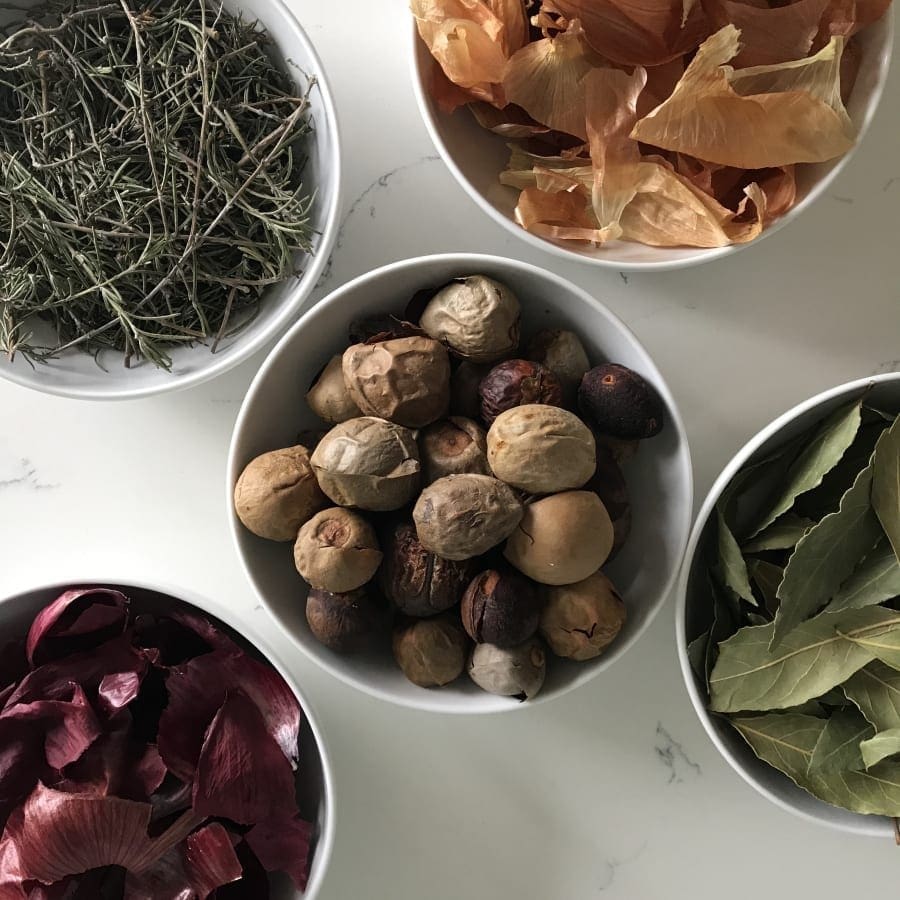Our Fashion and Textiles team of two, Charlotte and Philippa, spent a recent Saturday natural dyeing, re-colouring samples and offcuts from their combined fabric collections. Philippa Grogan details their day of dyeing experiments.
Natural dyes are of professional and personal interest to both Charlotte and I, though sadly they have lost some of their relevance in mainstream fashion since the 1850s after William Perkin’s serendipitous discovery of the first chemical dye: mauve. Having discovered our shared enthusiasm for this niche (but rapidly returning) technique, we decided to dedicate some time to explore the possibilities of dyeing with natural and foraged materials. Using a range of plant-based pigments, mostly sourced from Charlotte’s kitchen and garden, we spent the day experimenting with fibres and colours. Here are our key tips and takeaways to achieve the best shades possible.

Our fabrics had been pre-mordanted (a chemical soak that helps the dyes to stick) for a few days prior in both potassium aluminium sulphate (alum) and iron, chemicals which can both easily be found online. While using a pure ferrous sulphate is a simple and easy way to mordant with iron, you can also opt for a zero-waste option and make your own from rusty scrap metal.

After a quick coffee and planning session, we set to work dyeing an assortment of organic cotton, silks and hemp. We started with rosemary – a dye neither of us had experienced working with before – that had been harvested from a decades-old rosemary bush in Charlotte’s garden. While the rosemary was simmering away, we simultaneously set up a red onion skin dye bath. Again, this was the first time that either of us had dyed with red onion skin – although brown onion skin has long been one of my favourite natural dyes. In addition to the variation of outcomes that dyeing with onion skin can produce, it is also can be grown domestically and without the use of pesticides, and helps to lower food waste.
True to the unpredictable nature of using natural dyes, both produced surprising outcomes. Much to Charlotte’s delight, the rosemary samples had been dyed a multitude of greyish green tones. The red onion skin, bizarrely, had produced shades identical to those of brown onion skin – a dye that I have been experimenting with since 2015! 




